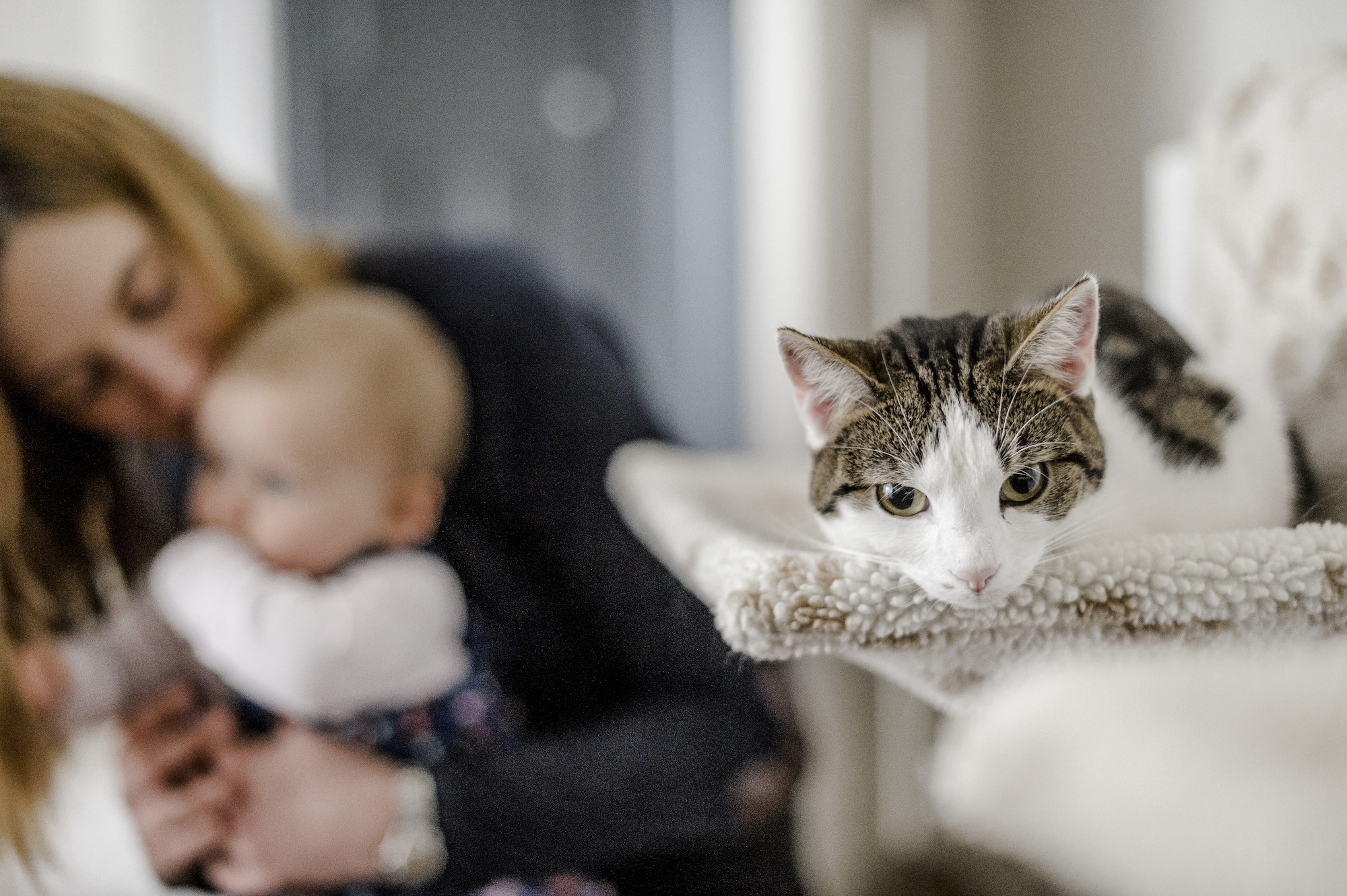
How to introduce your cat to your baby
It's important to get your new baby and your cat off to the best start. We'll explain how to introduce them, how your cat may react, safety and hygiene around your baby and how to know if your cat is coping.
If you're a few months off your due date, we have some additional tips on how to prepare your cat for life with a baby.
How to introduce your cat to your baby
- Introduce your baby in a quiet room where your cat doesn't usually hang out. This can't be a place where the cat usually sleeps or eats.
- Hold your baby in your arms and allow your cat to sniff them
- Your cat may appear interested for a few seconds and will then lose interest
Cats will usually become used to your baby if they are allowed to approach them in their own time.
Important
Never force your cat to approach your baby.
What if my cat runs away?
If your cat prefers to run away from your baby, that’s fine. Forcing your cat to interact with your baby could be very stressful.
Instead, allow your cat to escape and investigate in their own time. Carry on with your normal daily duties and routine and your cat should begin to accept your new arrival.
How will your cat react to your baby?
If your pet has already experienced the arrival of a new baby, and has coped well, you shouldn't have too many problems. Most cats are extremely adaptable and will cope well with some planning, but some cats might struggle.
If they are struggling, your cat may:
- become more avoidant of you or the new baby
- spend more time outside than usual
- hide away for long periods
- become less tolerant of being handled
- toilet in areas they haven't previously
- start spraying
If your cat is struggling, it's best to speak with a cat behaviourist. You can find a qualified, trusted behaviourist on the Animal Behaviour and Training Council (ABTC) website.
Things to think about
There are a few things that you will need to think about and be aware of.
Safety and babies
Never put your baby on the floor with your cat. They need to be supervised at all times. This is the case for all cats, even those with a good temperament.
To keep them safe when you can't supervise, you can:
- use a screen door for the baby’s nursery. This will allow you to keep the door shut, but still see and hear your baby.
- think about using a cot and pram net to stop your cat from investigating your sleeping baby
- be mindful of the areas your cat doesn't enjoy being stroked. It’s common for most cats to be sensitive around their stomach area and tail. Babies can 'grab' in their enthusiasm to want to touch and stroke, which can easily upset your cat.
Safety and toddlers
Once your baby starts crawling and toddling it’s important to remain alert.
- Make sure that your cat has a safe place to rest and relax, which is not accessible to your toddler. This will avoid a situation where the cat is continuously followed, cornered and pestered.
- Remember to place your cat’s litter tray in a quiet area away from anywhere that your infant has access to
Hygiene
It's best to:
- make an effort not to leave dirty nappies on the floor. They can cause cats to wee or poo on that spot.
- use antibacterial soap to clean your hands after feeding, grooming or playing with your cat
- always wear rubber gloves, which are washed afterwards, to clean your cat’s litter tray
- have a litter tray that has a top on it, so your cat can do their business but your baby can't get in
How will I know how my cat is coping?
You'll know your cat has settled in well with your baby if they:
- act the same way they did before your baby arrived
- approach your baby calmly and seem relaxed around them
- are able to sleep, eat, play and go about their daily business as usual
If they are struggling, you may see some key signs of stress. These can include something as subtle as grooming too much to toileting and spraying in your house.
If you feel that your cat is not settling in well to life with a baby, it's best to speak with a cat behaviourist. You can find a qualified, trusted behaviourist on the Animal Behaviour and Training Council (ABTC) website.




